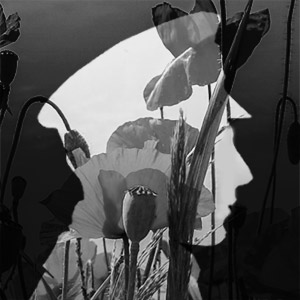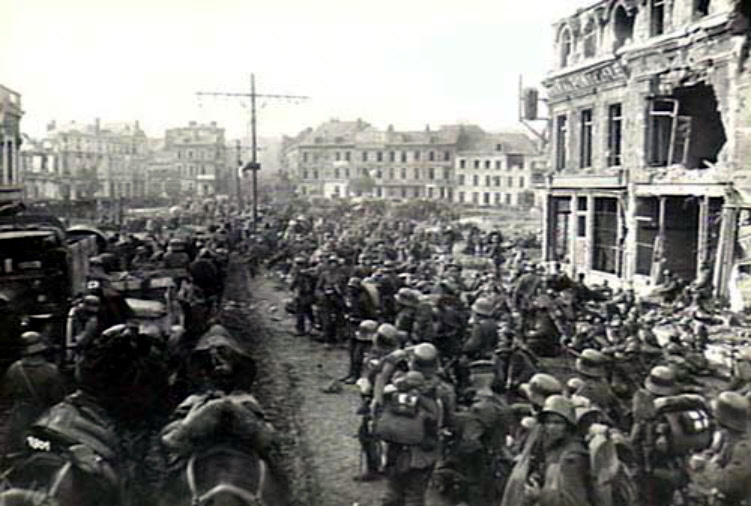
Laurence Ellis was born in Ossett on the 10th February 1899, the fifth child and second son of mason bricklayer Blakeley Ellis and his wife Emma (nee Chappell) who married in late 1883. Laurence was baptised on the 24th April 1899 at the Free Methodist Chapel, Dale Street, Ossett. The couple had eight children from their marriage, but two died before April 1911. In 1901 and 1911 the family lived at 12, Ryecroft Street, Ossett and in the latter year Laurence, aged 12, was still at school. Blakeley Ellis died in 1925, aged 67 in the Dewsbury Registration District.
The 15th (Service) Battalion of the Durham Light Infantry was Formed at Newcastle in September 1914 as part of K3 and came under orders of 64th Brigade in the 21st Division. They Moved to Halton Park, going on to billets in Maidenhead in December 1914 and then back to Halton Park in April 1915. The Battalion finally moved to Witley in July and on the 11th September 1915, they landed at Boulogne.
The beginning of 1918 found the 15th Battalion, Durham Light Infantry at Liéramont, undergoing training. From the 1st to the 20th March, the battalion was in divisional reserve and provided working parties every day.
In response to the massive German assault launched on the 21st March 1918, the battalion moved forward to successfully deliver a counter-attack to regain the ‘Yellow Line’ south of the Heudicourt – Vauceletter Farm road, during which the fourth CO ‘killed in action’, Lieut-Col H. W. Festing, was lost. Captain S. D. Thorpe, MC, assumed command temporarily until a permanent appointment could be made.
The positions gained were held throughout the day and only in the evening of the 22 March was an order received to withdraw to the Green Line near Templeux-la-Fosse. On the 23 March, the battalion fought a stiff rearguard action near Aizecourt-le-Haut but the enemy continued to press hard in ensuing days, prompting several tactical withdrawals to be made.
By the 25 March, the 64th Brigade had suffered so much that a composite battalion was formed, to which the battalion contributed a company. Another composite battalion was formed on the 26 March and the battalion, again, contributed a company but its remnants could only muster a company of seventy ORs commanded by a Lieutenant, which was little more than the strength of a normal platoon. The composite battalions were disbanded on the 31st March when men rejoined their own units.
During operations at the end of March 1918, the 15th Battalion lost four officers and thirty-three other ranks killed or died of wounds, seven officers and two hundred and twenty-seven other ranks wounded, and six officers and two hundred and twenty-six other ranks were posted ‘missing’, one of those 226 men from the other ranks posted missing was Private Laurence Ellis from Ossett, and his body was never recovered.

Above: German troops at St. Quentin in March 1918 during ‘Operation Michael’.
Laurence Ellis’s army service record has not survived, but he was posthumously awarded the British and Victory medals, but not the 1914/15 Star, indicating that he did not serve overseas until after 31st December 1915. His medal record gives his Durham Light Infantry service number 79210 and a service number 66554 for “Grad Bn (D.L.I.)”
Private Laurence Ellis was killed in action on the 21st March 1918 and is remembered on Panels 68 to 72 on the Pozieres Memorial,1 Somme, France. Pozieres is a village 6 kilometres north-east of the town of Albert. The Memorial encloses Pozieres British Cemetery which is a little south-west of the village on the north side of the main road, D929, from Albert to Pozieres.
The Pozieres Memorial relates to the period of crisis in March and April 1918 when the Allied Fifth Army was driven back by overwhelming numbers across the former Somme battlefields, and the months that followed before the Advance to Victory, which began on 8 August 1918. The Memorial commemorates over 14,000 casualties of the United Kingdom and 300 of the South African Forces who have no known grave and who died on the Somme from 21 March to 7 August 1918.
The Corps and Regiments most largely represented are The Rifle Brigade with over 600 names, The Durham Light Infantry with approximately 600 names, the Machine Gun Corps with over 500, The Manchester Regiment with approximately 500 and The Royal Horse and Royal Field Artillery with over 400 names.
The memorial encloses Pozieres British Cemetery, Plot II of which contains original burials of 1916, 1917 and 1918, carried out by fighting units and field ambulances. The remaining plots were made after the Armistice when graves were brought in from the battlefields immediately surrounding the cemetery, the majority of them of soldiers who died in the Autumn of 1916 during the latter stages of the Battle of the Somme, but a few represent the fighting in August 1918.
There are now 2,758 Commonwealth servicemen buried or commemorated in this cemetery. 1,380 of the burials are unidentified but there are special memorials to 23 casualties known or believed to be buried among them. There is also one German soldier buried here.
References: